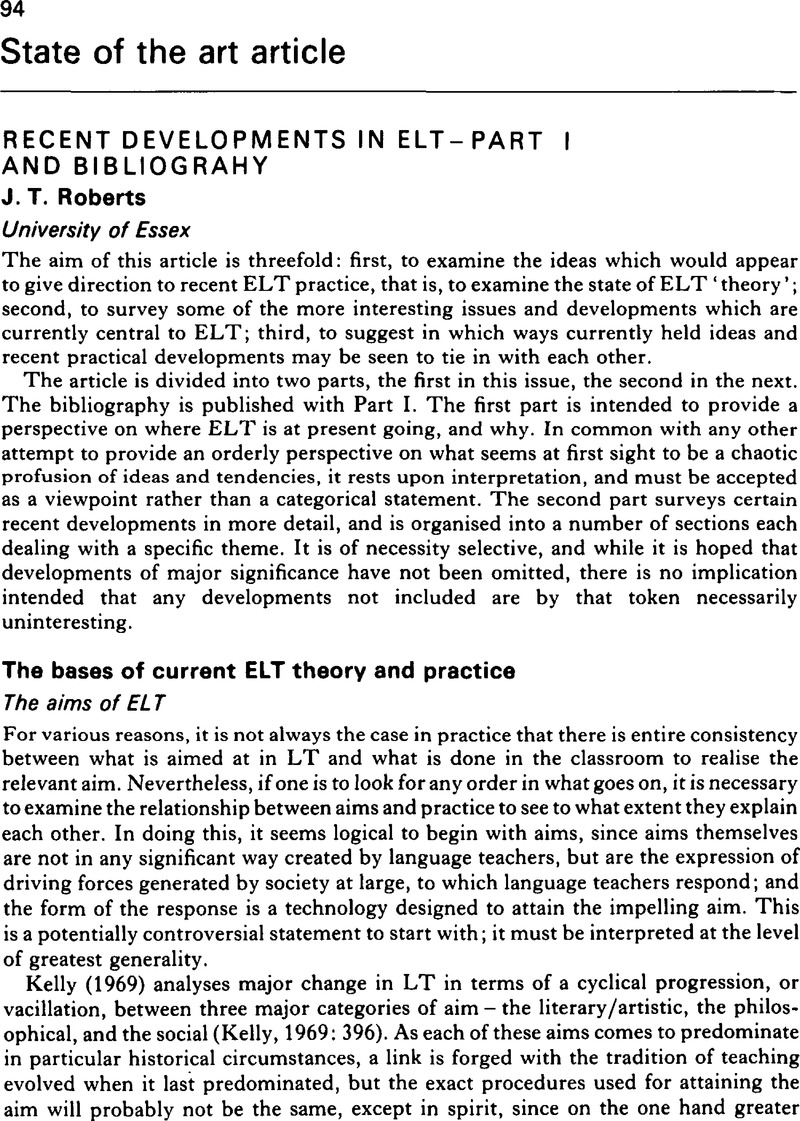Crossref Citations
This article has been cited by the following publications. This list is generated based on data provided by Crossref.
Brindley, Geoff
1985.
Some current issues in second language teaching.
Australian Review of Applied Linguistics,
Vol. 8,
Issue. 2,
p.
87.
Cortese, Giuseppina
1985.
An experiment in minimal teacher- training for ESP.
The ESP Journal,
Vol. 4,
Issue. 2,
p.
77.
Godin, P.
and
Ostyn, P.
1985.
La grammaire dans l'enseignement des langues étrangères.
ITL - International Journal of Applied Linguistics,
Vol. 66,
Issue. ,
p.
25.
Zettersten, Arne
1986.
New Technologies in Language Learning.
p.
15.
Weideman, Albert
2006.
Assessing academic literacy: A task-based approach.
Language Matters,
Vol. 37,
Issue. 1,
p.
81.
2017.
Encyclopedic Dictionary of Applied Linguistics.
p.
169.
Ahn, S.-H. Gyemyong
and
Lee, Mun Woo
2019.
English Classes in Slumber.
p.
17.



